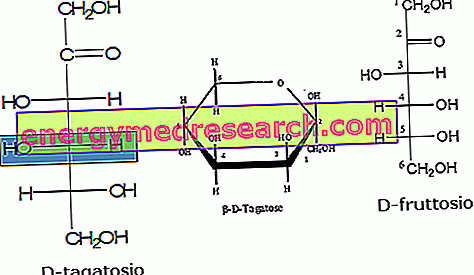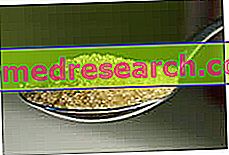Characteristics and use as a sweetener
Tagatose is a chetoesose monosaccharide, isomer of fructose, with interesting properties: it has a sweetening power equal to 92% of sucrose, a reduced caloric intake, it is not cariogenic, it has prebiotic effects and it is an enhancer of aromas.
Although it is obtained by semi-synthesis, tagatose is a natural sugar present in small quantities in heated cow's milk and in various dairy products. The industrial production of tagatose is a stepwise process which takes place starting from the lactose; this disaccharide typical of milk is subjected to enzymatic treatment and purification techniques. In this way a mixture of glucose and galactose is obtained which is then separated by chromatography; the chromatographically recovered galactose is then converted into tagatose under alkaline conditions; the latter is finally purified until a 99% pure product is obtained.

Safety of use and advantages over sugar
Despite the chemical similarity, fructose and tagatose are metabolized differently by the human organism. The transport system for fructose in the small intestine, carrier-mediated, is in fact devoid of affinity for tagatose; therefore, only about 20% of the ingested tagatose is actually absorbed in the intestine and metabolized in the liver (with the same metabolic pathway as fructose). The unabsorbed percentage is fermented in the colon by bacterial microflora, with formation of short chain fatty acids (SCFAs), including butyrate (it plays an important role on the proliferation and differentiation of cells of the colon epithelium, preventing local development of carcinomas). The colic fermentation of tagatose favors the increase of the good bacterial flora (lactobacilli and lactic acid-bacteria) at the expense of the bad; furthermore, the reduced absorption and fermentation bring the caloric value of D-tagatose to a maximum of 1.5 Kcal / g (against 4 Kcal / g of sucrose).
The consumption of D-tagatose does not promote an increase in blood glucose levels or insulin levels and attenuates blood sugar levels when taken before glucose or sucrose; it can therefore also be used by diabetics. It is very slowly converted into organic acids by dental plaque bacteria, so it does not cause tooth decay.
Tagatose, similarly to sucrose but differently from fructose, is not hygroscopic, so it does not require special storage conditions and causes fewer problems in the intestine. It has a solubility in H 2 O similar to that of sucrose; at high temperatures it decomposes (caramelizes) faster than sugar, is less stable at extreme pH and can be converted into various compounds.
Some studies commissioned to determine whether tagatose has synergistic properties with respect to other aromas and other sweeteners, have shown that this sweetener enhances the action of aspartame and acesulfame K. In similar mixtures, tagatose speeds up the triggering of the sensation of sweetness and reduces the bitter taste; it also improves the sensory characteristics: reduced sensation of dry mouth, reduced sweetish aftertaste and reduced bitter aftertaste.
The biological properties and organoleptic characteristics of the tagatose suggest its use as a sweetener for diabetics, a prebiotic and a sweetener in non-cariogenic and low-calorie sweet products (confectionery, soft drinks, breakfast products, chewing gum).
There are no documentation against the use of tagatose; for this reason the FDA approved it in 1999, defining a caloric intake of 1.5 Kcal per gram. Regarding all these properties, tagatose represents one of the most promising sweeteners of the future.



